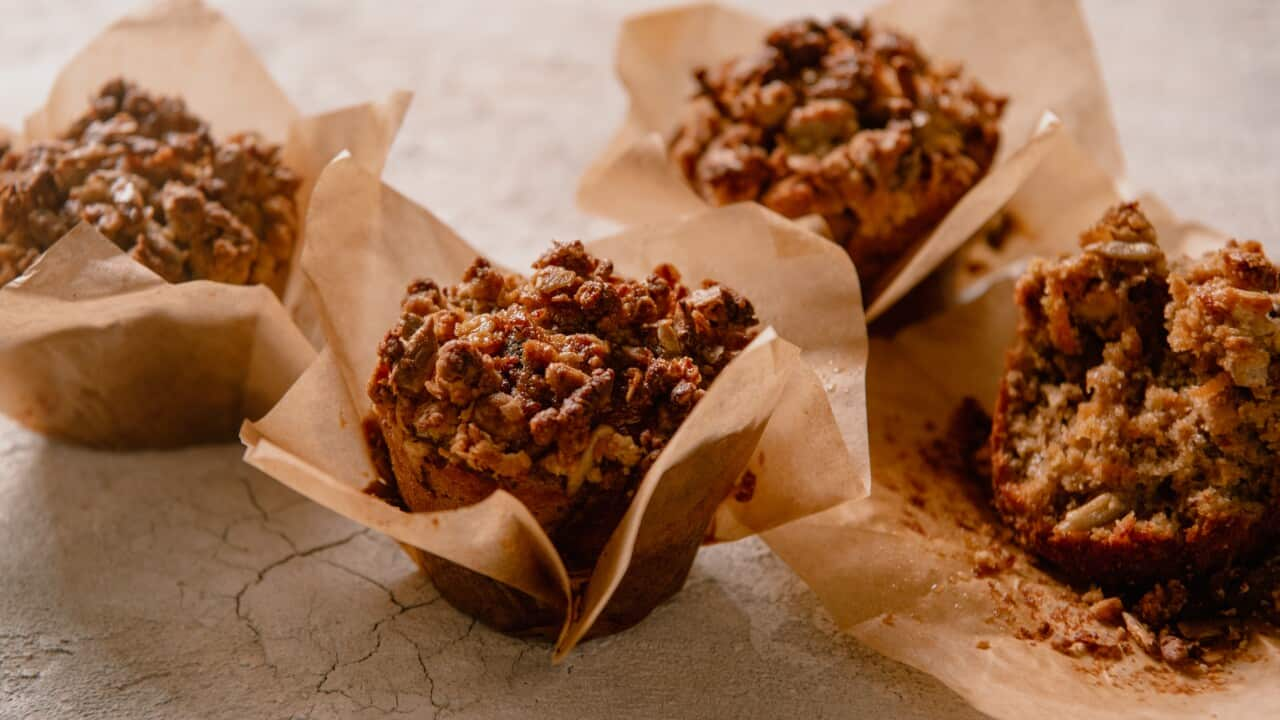--- airs weeknights at 7pm on SBS Food (Ch.33). All episodes are available anytime on . ---
“It's estimated that a third of the food that we produce in Australia is wasted,” award-winning author and sustainable chef Matt Stone said on .
There’s no doubt that the vast majority of Australians are on board with reducing the food we throw away each year. After all, it’s not just the environment paying the cost – the impact on the household budget can be significant.
Here are five things we can all do from our own little corners.
1. Eat ‘root to leaf’
You’ve no doubt heard of ‘nose-to-tail’ cooking, but it applies to plant foods just as well. Eating ‘root to leaf’ means taking advantage of all the edible parts of the plant.
“We buy these beautiful veggies in the winter season, the turnips and beets and radishes, and we throw a good 50 percent, if not more of it, out straight away,” says Stone.

“Cime di rapa – ‘the tops of turnips’ – in Italy is a really highly regarded plant, vegetable ingredient, that we don't really use a lot here, but that's essentially what it is, the tops of the turnips ,” says sustainable chef Matt Stone.
Instead, he suggests you ‘add value’ to your meals by using every bit of the food you’ve purchased. That means your broccoli stalks, cauliflower and turnip leaves, carrot tops, the green parts of the leek and scallions, watermelon rinds…
In fact, the only leafy green he suggests you don’t eat is rhubarb leaves.
“You don't want to go near [rhubarb leaves], they're a little bit toxic, but it's in high volumes,” he explains. “A lot of these plants, you need to consume a lot of it to actually get ill. But anything, if you're eating the root of it, you generally can eat the top of it as well .”
If you’re not sure what to make with your tops, throw them into a bag, freeze them and add them to your once you’ve gathered a bunch.
2. Reinvent your meals
There’s no need to buy breakfast cereal when leftovers are in the fridge. Eating last night’s casserole for breakfast is a nutritious, economical way to start the day. It’s also the way people used to eat before .
If you haven’t quite got enough in the pot to make a full meal, simply add an egg and some leaves (see above). The hit of protein is a great way to start your day, plus it adds a distinctly ‘brekkie’ flavour to last night’s dinner.
Another way to reinvent your meals is to cook any fruit that gets left behind. Don’t throw away the sad stuff everyone keeps bypassing. That bruised and slightly soggy fruit has life in it yet.
“The two fruits that are usually the biggest culprits are two of my favourite fruits to cook: bananas and apples,” says Alexx Stuart, blogger and podcaster at Low Tox Life. “I grew up eating with a Mauritian mum and bananas in Mauritius are a coveted dessert, [especially when you] caramel roast them.
"You literally just put your sad-looking bananas onto a baking dish with a bit of butter and a little sprinkle of cinnamon and coconut sugar, bake them for 10-15 minutes at 180°C and get delicious roast caramel bananas. You can do the same with apples, but they take a little longer to roast.”

Baked apples with almond crumble is another recipe that works fine with tired, old apples. Credit: Adam Liaw
Other ways to use up spotty bananas:
Use up your bruised apples:
3. Swap with friends
If you’ve got fruit or vegetables (or any food, really) you know you won’t use, find a neighbour who will. Many neighbourhoods now have a community food pantry, where you can leave any food you know you won’t eat. These pantries can be as simple as a vermin-proof cupboard installed on a local street verge, to a council-run indoor ‘shop’ where the larger community can benefit. If you don’t have a community pantry in your area, talk to your council about establishing one.
If that all feels too hard, there’s a very easy way to share leftovers with neighbours and friends. Simply invite a few extra guests to dinner so you can use up what you have. It works even better if you host a and encourage everyone to bring their own leftovers to enjoy together.
Make it a regular event so everyone knows it’s coming up, that way they can save food that would otherwise go to waste.
4. Learn new techniques
As Matt demonstrated on The Cook Up, sometimes you need to learn a new way of cooking something in order to use it all up. He showed how you can finely slice the more gnarly parts of vegetables so they can cook harmoniously with the softer parts you usually use.
Take broccoli for instance. The stalks are just as tasty as the florets, but you do need to chop them into smaller pieces so they can cook through in your stir-fry or stew.
Another technique we could all benefit from learning is how to use the freezer to its full potential. Freezing food you won’t use immediately is a simple, effective way to avoid food waste.
Some of the foods you can freeze that you might not know about include:
Eggs – crack them into an airtight container and freeze for up to a year, but it’s best to use them up within a few months. You can also separate your yolks and whites before you freeze.
Milk and other dairy – decant your large milk container into smaller plastic bottles, leaving at least a three-centimetre gap at the top. Use within a month of freezing.
You can also freeze cheese (grated is best), cream, butter and yoghurt (although unlike other dairy, the texture of yoghurt will be compromised, so frozen yoghurt is best used up in smoothies).
Fruit and vegetables – most cooked fruit and veg freeze just fine, including potatoes, carrots and apples. Uncooked berries and mango freeze like a dream, as do citrus fruits like oranges and grapefruit. You can even freeze avocado by mashing it and putting it into an ice cube tray.
Once frozen, pop the cubes into a freezer bag to defrost and add to your dishes. Use up all home-frozen fruit and vegetables within the month.
Herbs – we’re all guilty of throwing out a bunch of herbs after using the tablespoon a recipe requires. Next time, chop up the remainder and pop them into the freezer in a sealed freezer bag. You can add them to future dishes while still frozen.
5. Get your blender out
Blitzing your leftovers into hearty soups and healthy smoothies couldn’t be easier. Both are highly nutritious, easy-to-make standbys that you can sip on at breakfast, lunch, dinner and also in between.

Čorba is a tasty Bosnian soup that can take whatever vegetables you want to throw at it. Credit: Adam Liaw
If you’re looking into the crisper thinking ‘how am I going to use up all this limp produce?’, Stuart's number one go-to is the veggie-blended soup. “We love that, we keep all our endy-bits of bread for croutons, then make a curried, pureed veggie soup out of whatever is left in the fridge.”
The only vegetable Alexx won’t put in her ‘blender soup’ is beetroot as it can be a little bit ‘heavy and earthy’. Instead, she saves beetroot leftovers for smoothies – the other blended beauty that absolutely loves leftover fruit and veg.

















